Giant Iceberg Is Poised to Break Off Antarctica, Scientists Say
A chunk the size of Delaware is expected to produce an event that could cause the collapse of the continent's northern ice shelf.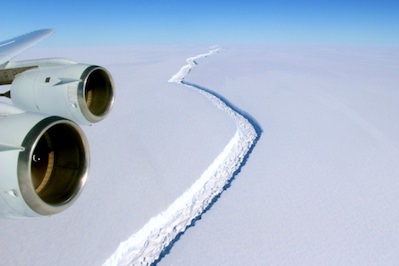
By Nika Knight / Common Dreams
An iceberg the size of Delaware is poised to break away from Antarctica, potentially triggering the collapse of the continent’s northern ice shelf, scientists announced Thursday.
When it breaks off, or calves, the iceberg will be one of the ten largest ever recorded, BBC News reported. It encompasses an area of 1,900 square miles, and it is clinging to the ice shelf in question, Larsen C, by only 12 miles of ice.
“If it doesn’t go in the next few months, I’ll be amazed,” said Adrian Luckman, a professor at Swansea University and a project leader on the team tracking the event, told BBC News.
A rift separating the iceberg from Larsen C has been steadily developing for years, but increased suddenly by 11 miles within the latter half of December.
Researchers said that “the calving event was ‘part of the natural evolution of the ice shelf,’ but added there could be a link to changing climate, though they had no direct evidence of it,” according to NBC News.
Whether or not the calving event was caused by climate change, the dispersal and disruption of the ice shelf may have climate ramifications. Martin O’Leary, another researcher from Swansea University, told the Guardian that “the disintegration of a major shelf could accelerate the melting of glacial ice linked to warming oceans.”
In a statement, scientists tracking the ice shelf from the UK’s Project Midas explained: “The Larsen C Ice Shelf in Antarctica is primed to shed an area of more than 5000 sq. km following further substantial rift growth. After a few months of steady, incremental advance since the last event, the rift grew suddenly by a further 18 km during the second half of December 2016. Only a final 20 km of ice now connects an iceberg one quarter the size of Wales to its parent ice shelf.”
“When it calves, the Larsen C Ice Shelf will lose more than 10 percent of its area to leave the ice front at its most retreated position ever recorded; this event will fundamentally change the landscape of the Antarctic Peninsula,” the scientists wrote.
“We have previously shown that the new configuration will be less stable than it was prior to the rift,” the researchers added, “and that Larsen C may eventually follow the example of its neighbor Larsen B, which disintegrated in 2002 following a similar rift-induced calving event.”
Indeed, if the calving triggers the total break-up of Larsen C, it would be the third major Antarctic ice shelf to collapse since the mid-1990s. Larsen A and Larsen B collapsed in 1996 and 2002, respectively, after similarly massive icebergs broke off and triggered sudden large-scale break-ups.
“We are convinced, although others are not, that the remaining ice shelf will be less stable than the present one,” Luckman commented to BBC News.
Nika Knight is a staff writer for Common Dreams.
Your support matters…Independent journalism is under threat and overshadowed by heavily funded mainstream media.
You can help level the playing field. Become a member.
Your tax-deductible contribution keeps us digging beneath the headlines to give you thought-provoking, investigative reporting and analysis that unearths what's really happening- without compromise.
Give today to support our courageous, independent journalists.

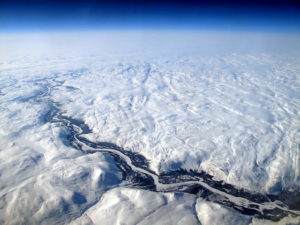
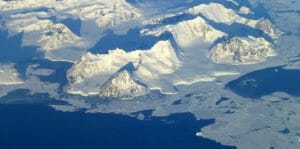

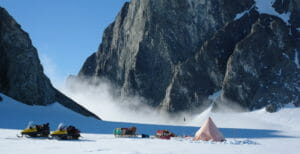
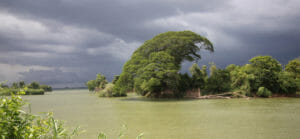
You need to be a supporter to comment.
There are currently no responses to this article.
Be the first to respond.